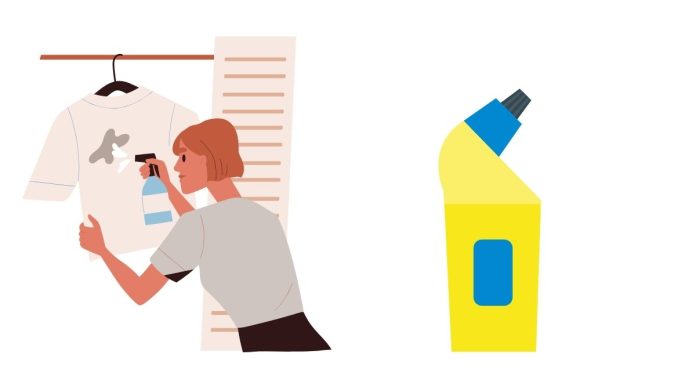Removing a grease stain can be tricky, but with the right technique, you can effectively get rid of it. Grease stains are often stubborn because oil can seep deeply into fabrics, but it’s possible to treat them with the right products and steps. Below is a detailed guide to removing grease stains from clothing and fabrics.
Materials You Will Need:
- Dishwashing liquid (preferably a grease-fighting one) – Commonly used for grease removal.
- Baking soda or cornstarch – These powders can absorb grease.
- Stain remover (optional) – Commercial stain removers designed for grease stains.
- Old toothbrush or soft brush – For scrubbing the stain gently.
- Warm water – To help loosen the grease.
- Clean cloths or paper towels – To blot or wipe off excess grease.
- Laundry detergent – To wash the item after treatment.
Step-by-Step Guide to Removing a Grease Stain:
1. Act Quickly
- The faster you treat a grease stain, the more likely you are to remove it completely. Once grease settles into the fabric, it becomes harder to remove, so address the stain as soon as possible.
2. Blot the Stain
- If the stain is fresh and wet, blot the grease with a clean cloth or paper towel. Do not rub the stain, as rubbing can push the grease deeper into the fabric fibers.
- Keep blotting until you’ve absorbed as much of the grease as possible. Be gentle and don’t press hard, to avoid spreading the stain further.
3. Apply a Grease-Removing Agent
- Dishwashing Liquid: Apply a small amount of dishwashing liquid directly onto the grease stain. Dish soap is designed to break down oil and grease, making it a powerful stain-fighting agent. Gently rub it into the fabric with your fingers or a soft toothbrush.
- Allow the dish soap to sit on the stain for about 5–10 minutes to help break down the grease.
- Baking Soda or Cornstarch: If the grease stain is fresh but not liquid (e.g., from food), sprinkle baking soda or cornstarch directly onto the stain. These powders will absorb the grease. Let it sit for 15–20 minutes, then brush it off gently using a soft brush.
- Commercial Stain Remover: You can also use a commercial stain remover specifically designed for grease stains. Follow the instructions on the product’s label, applying it directly to the stain and allowing it to sit for the recommended time.
4. Scrub Gently
- If you used dishwashing liquid or a stain remover, use a soft brush or an old toothbrush to gently scrub the area. This helps work the detergent or solution deeper into the fabric and loosens the grease. Be gentle to avoid damaging delicate fabrics.
5. Rinse the Stain
- After letting the grease-fighting agent sit for a while, rinse the stained area with warm water. This helps remove the dishwashing liquid or stain remover along with the loosened grease. Make sure to rinse thoroughly.
6. Wash the Fabric
- Wash the garment as usual in your washing machine using a good-quality laundry detergent. Use the warmest water temperature the fabric can tolerate (check the care label for guidance).
- For particularly tough stains, you can also consider adding an additional grease-fighting detergent or a stain booster to the wash load.
7. Check Before Drying
- After washing, inspect the fabric to ensure the grease stain is completely gone. Do not put the garment in the dryer until the stain is fully removed, as the heat can set the stain permanently.
- If the stain is still visible, repeat the process from step 2.
8. Air Dry
- Once the stain is completely gone, air dry the garment. Avoid using the dryer until you’re certain the stain is completely removed, as heat can set remaining traces of grease.
Additional Tips:
- For Delicate Fabrics: If you’re dealing with delicate materials such as silk or wool, be extra careful with scrubbing and avoid using harsh products. Test any cleaning solution on a hidden area first to ensure it won’t damage the fabric.
- For Upholstery or Carpets: If the grease stain is on upholstery or carpet, use a blotting action to remove excess grease, then apply a mixture of dishwashing liquid and warm water (test on a hidden area first). After applying, blot the area with a clean cloth to remove grease and solution.
- Repeat if Necessary: Sometimes, especially with older or stubborn stains, you might need to repeat the process several times to fully remove the grease.
By following these detailed steps, you can effectively treat and remove grease stains from most fabrics. The key is to act quickly, use the right cleaning agents, and follow the procedure carefully.


